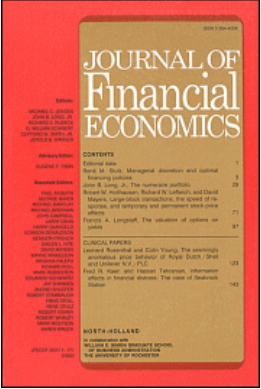没有外来风险的金融
IF 10.4
1区 经济学
Q1 BUSINESS, FINANCE
引用次数: 0
摘要
我们解决联合假设问题,在横断面资产定价通过测量分析师的盈利增长预期。我们构建了基于预期的回报(EBRs)的公司层面度量,它使用分析师的预测误差和修正,并关闭了要求回报的任何横截面差异。我们得到三个结果。首先,ebr的变化在价值、投资、规模和动量因素上占了横截面收益差的很大一部分。其次,这些价差的时间变化可以从ebr中预测出来,ebr持有恒定的比例价格变量(作为随时间变化的所需回报的代理)。第三,通常被视为捕捉风险溢价的企业特征预示着预期的失望和较低的ebr。总体而言,通常归因于外来风险因素的回报差可以用企业盈利增长非理性预期的可预测变动来解释。本文章由计算机程序翻译,如有差异,请以英文原文为准。
Finance without exotic risk
We address the joint hypothesis problem in cross-sectional asset pricing by using measured analyst expectations of earnings growth. We construct a firm-level measure of Expectations Based Returns (EBRs) that uses analyst forecast errors and revisions and shuts down any cross-sectional differences in required returns. We obtain three results. First, variation in EBRs accounts for a large chunk of cross-sectional return spreads in value, investment, size, and momentum factors. Second, time variation in these spreads is predictable from that in EBRs, holding constant scaled price variables (as proxies for time varying required returns). Third, firm characteristics often seen as capturing risk premia predict disappointment of expectations and low EBRs. Overall, return spreads typically attributed to exotic risk factors are explained by predictable movements in non-rational expectations of firms’ earnings growth.
求助全文
通过发布文献求助,成功后即可免费获取论文全文。
去求助
来源期刊

Journal of Financial Economics
Multiple-
CiteScore
15.80
自引率
4.50%
发文量
192
审稿时长
37 days
期刊介绍:
The Journal of Financial Economics provides a specialized forum for the publication of research in the area of financial economics and the theory of the firm, placing primary emphasis on the highest quality analytical, empirical, and clinical contributions in the following major areas: capital markets, financial institutions, corporate finance, corporate governance, and the economics of organizations.
 求助内容:
求助内容: 应助结果提醒方式:
应助结果提醒方式:


